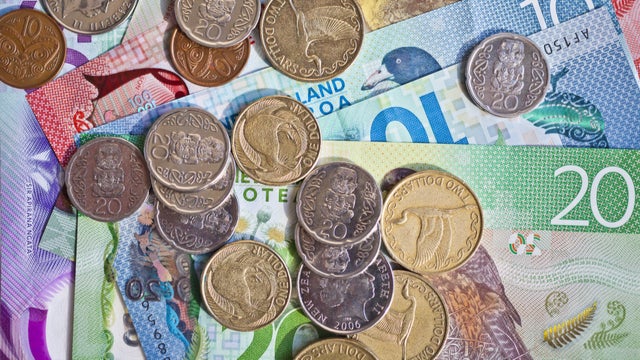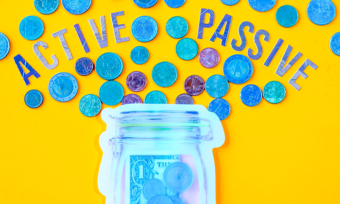In your 20s, as you navigate all adulthood has to offer, it can be easy to put KiwiSaver on the backburner. But by getting on top of your KiwiSaver and choosing the right level of payments and investments, you can set yourself up for a far more financially rewarding retirement. Canstar’s latest KiwiSaver guide covers all the bases, with answers to the most common KiwiSaver questions.
The Basics
What is the purpose of KiwiSaver?
KiwiSaver helps you save money for your future. It’s a voluntary savings scheme to help set you up financially for your retirement. It was conceived by the government as a way for Kiwis to build a nest egg separate from NZ Super (the government pension that’s paid out to all New Zealanders over the age of 65). You can make regular contributions from your pay or directly to your scheme provider.
The key thing to know about KiwiSaver is you aren’t able to withdraw funds whenever you like. Other than a few exceptions, such as financial hardship or ill-health, you aren’t able to withdraw KiwiSaver funds until you are 65, or to buy your first home.
How does KiwiSaver work?
Each payday, deductions are made from your wages and paid into your KiwiSaver. You can choose how much to contribute (see below). If you don’t choose a contribution rate, your employer will deduct the default rate of 3%.
Your employer and the government also contribute to your KiwiSaver account. Employers contribute at least 3% of your pre-tax salary or wage to your KiwiSaver.
The government contributes 50 cents for each dollar you contribute (to a maximum of $521.43 per year). Your provider applies for the government’s contribution automatically on your behalf.
How much money do I have to contribute from my wages?
You can choose to put in 3%, 4%, 6%, 8% or 10% of your gross (before tax) salary or wage. For example, if you earn $500 per week, you can choose to contribute $15, $20, $30, $40 or $50 of that $500 to your KiwiSaver account.
I’m already in a full time job and I don’t belong to KiwiSaver, can I sign up anytime?
Yes, you can. If you’re already employed but not a KiwiSaver member, you can join either through your employer or through a KiwiSaver provider.

How do I know if I’m already signed up to KiwiSaver?
If you’re not sure if you’re already with a KiwiSaver provider, contact Inland Revenue. If you’re a member, they will have your details on file. Call 0800 KIWISAVER, or log in to myIR to check.
Keep in mind KiwiSaver is a voluntary savings scheme: if you don’t want to contribute, you don’t have to. Most people get automatically enrolled in KiwiSaver when they start their first job, so if you don’t want to be a member, you’ll have to consciously opt out.
Picking the Right Scheme
What do the different fund types mean, and how do I know which one to pick?
In New Zealand, KiwiSaver schemes are regulated by the Financial Markets Authority (FMA) to ensure schemes are competitive and are in members’ best interests. Not all schemes are created equal, though.
When choosing the right KiwiSaver scheme for you, you must consider a range of factors, including: performance, risk levels, management fees and special features, such as ethical and social investment offers.
KiwiSaver fund managers invest your money in a mix of two main types of assets: income or growth assets. Income assets are things such as cash and government bonds (traditionally safer investments). Growth assets are things like stocks and shares (investments with more risk attached).
Over the long term, growth assets usually bring higher returns, on average, than income assets. But there are always ups and downs along the way.
The different types of funds can be broken down into five main types. Each has its own profile of risks and returns:
Defensive funds hold 0% to 9.9% in growth assets. Good if you:
- Don’t want your KiwiSaver account to go down (although there are no guarantees). Although that means your account almost certainly won’t grow as fast, over the long term
- Expect to spend your KiwiSaver money in the next three years
Conservative funds hold 10% to 34.9% in growth assets. Good if you:
- Are willing to take on some ups and downs in value, and are seeking average long-term returns a bit higher than in a defensive fund, but probably not as high as in riskier funds
- Expect to spend your KiwiSaver money in the next two to six years
Balanced funds hold 35% to 62.9% in growth assets. Good if you:
- Are middle of the road, comfortable with seeing your account value sometimes fall a little and seeking mid-range, long-term returns
- Don’t expect to spend your KiwiSaver money within the next five to 10 years

Growth funds hold 63% to 89.9% in growth assets. Good if you:
- Are looking for fairly high growth over the long term, and will not panic and rush to switch to a lower-risk fund whenever you see your account balance fall dramatically
- Are intending to leave your money in KiwiSaver for at least 10 years
Aggressive funds hold 90% to 100% in growth assets. Good if you:
- Are looking for strong long-term growth, knowing you will stick with your fund even when your balance falls fast
- Intend to leave your money in KiwiSaver for at least 10 years
I have KiwiSaver but I’ve never looked into my fund type, should I?
Yes! Now is a great time to check. If you’ve been with the same provider for years (say you signed up with your bank for convenience when you were a teenager), it’s likely you might have outgrown your fund type. Potentially, you could be getting better returns with a different provider.
Also, if you were automatically opted into KiwiSaver, and your employer had no preferred provider, you are likely in what is called a “default” fund. These are conservative, low-risk, low-return default funds that are designed as a temporary holding pen until a KiwiSaver member opts for a fund better suited to their needs.
Currently around 14% of KiwiSaver members have made no active choice to move from their default fund. That’s around 400,000 members whose money could be working harder for them if they took the time and effort to research which KiwiSaver fund is right for them.
Note that from next year, new default KiwiSaver accounts will be put into balanced, rather than conservative, funds. You can read more about the implications of this in our story: What the Changes to the Default KiwiSaver Setting Mean for New Members and First Home Buyers.

How easy is it to change fund providers?
It’s easy. You can change your KiwiSaver scheme provider at any time. To make a move, you need to apply directly to the provider of the scheme you want to join. Your new provider arranges the transfer of your savings from your old scheme to the new one. The process takes about two weeks, but your old scheme provider may charge you a transfer fee, so check this with them.
Can I find out what my KiwiSaver provider invests in?
Yes! Just check out a provider’s website for information on the investments made in their funds. Their quarterly fund updates should list their top 10 investments.
Can I make sure my KiwiSaver provider is investing ethically?
For sure! There are plenty of ethical funds out there that are likely to align with your values. Ethical KiwiSaver funds/socially responsible funds can also be called green or sustainable investments. The term ethical will obviously mean different things to different people, and investment funds also have a variety of approaches to this question, so have a good read of why a fund might label themselves ethical.
You might have concerns that the constraints of ethical investing could reduce the spread of your portfolio, meaning your returns are reliant on the performance of fewer companies. But that’s not necessarily true. We’ve got a full run down on this and the ethical investing realm here: KiwiSaver: An Ethical Investing Guide.

KiwiSaver and First Home Buyers
I want to buy a home in the next 5-10 years. Which fund type is best for me?
If you’re looking to withdraw in the next five years, generally, it’s best to pick a lower risk fund, as you don’t want to risk a sharp drop off in your account balance.
But, having said that, if you’re happy to take the risk associated with a higher risk fund (especially over a longer term of 10 years), it could work in your favour. You could potentially give your home deposit a greater boost by opting for a more aggressive fund, even if it’s just for the first few years.
Be mindful, though, that if you make some good gains, you might want to lock them in once you’re happy with the amount you’ve made, to save losing them.
How can I use KiwiSaver to buy my first home?
Your KiwiSaver savings can be used to buy a first home, or to buy the land on which to build a first home. If you’re eligible, you can apply to withdraw the total amount in your KiwiSaver account, except for $1000.
Depending on whether you’re buying an existing home or a new build, you can also get up to $10,000 towards buying your first home through the KiwiSaver HomeStart grant. Check out our story KiwiSaver First Home Buyers Withdrawal: 14 Useful Steps for more help on this.

Is KiwiSaver a Safe Way to Invest My Money?
Keep in mind KiwiSaver is designed as a long-term investment to provide retirement funds, which makes it a pretty solid investment. It’s one that’s more likely to produce returns than shorter-term punts on individual stocks.
However, no investment is risk free, so make sure you keep on top of your level of risk throughout the life of your KiwiSaver journey. As you approach retirement, you’ll need to pay more attention, because you’ll probably want to swap to a safer investment strategy to stop your nest egg getting wiped out by a short-term global shock. Think pandemic!
It’s important to do some research and consider what different KiwiSaver providers offer before making any decisions. One useful way to help with your assessment is to compare KiwiSaver funds using Canstar’s comparison tools, as well as by reading Canstar’s KiwiSaver star ratings report. Our latest 2020 report highlights the best-value providers and schemes on the market. Your future self will thank you!
Compare KiwiSaver providers for free with Canstar!
Enjoy reading this article?
You can like us on Facebook and get social, or sign up to receive more news like this straight to your inbox.
By subscribing you agree to the Canstar Privacy Policy




Share this article